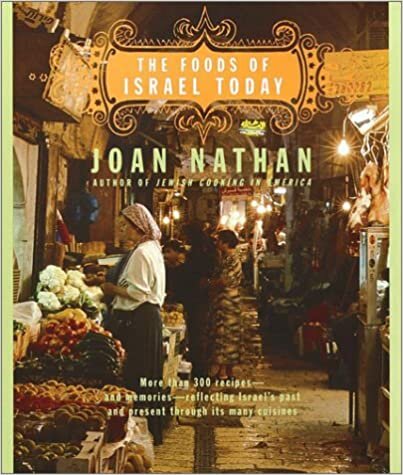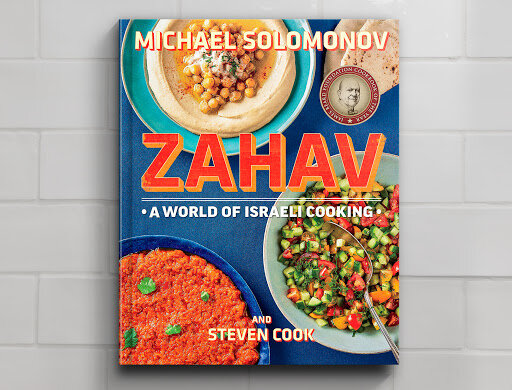Ten years ago I paid my first and only visit to Israel/Palestine and I had a conversion experience. Not to Jesus or Judaism or any of the many flavors of ancient Christianity on offer.
No, I was converted to olives.
Understand that up to this point my primary acquaintance with olives was in the form of the flabby black rings that came from a can and looked and tasted like tires. Or, more rarely, a pimento-stuffed one nicked out of a parent’s martini: hard to say which was worse, the drink or its garnish.
I was always rather sad about this because olives seemed, in principle, to be cool and sophisticated. I wanted to be the kind of person who eats olives. Alas. I was not.
And then, by one of those odd series of circumstances in life in which you end up at the Greek Orthodox monastery attached to the Church of the Nativity in Bethlehem (not the Armenian Apostolic or the Roman Catholic monastery, mind you), I was confronted with a lavish feast amidst which sat a plate heaped with glistening, oozing olives. They were honestly black, not chemically black, wrinkled and puckered and very inviting. I don’t like olives, I said to myself. But a taste can’t hurt.
Well, I won’t bother you with the immoderate and propagandistic praise of the convert. Let’s just say that I love them now—the real ones, not the imitation horrors that show up on pizza.
This naturally led me on to Israeli cookbooks to make good use of my newfound love, and in due course to fall in love with a lot of other things, too.
My induction was via Joan Nathan, with good reason—she is to Jewish food what Julia Child is to French. I got her The Foods of Israel Today, which reads in a way like an ethnographic-gastronomic survey as much as a cookbook. It documents actual recipes of ordinary people, a lot of them concocted in years of want and deprivation. (Turns out “Israeli couscous” was a cheap substitute for rice and still conjures up feelings of second-best for Israelis.)
The two main things I learned from Joan Nathan were: 1) there is no limit to the number of ways you can combine tomatoes and eggplant, and the longer cooked together, the better; and 2) the secret to felafel is soaked raw chickpeas, ground in the food processor with lots of fresh herbs. I can’t even tell you how many disastrous attempts at felafel I chucked out under the misapprehension that it can work with canned cooked chickpeas. That discovery alone was worth the price of the book.
Some years later I found Zahav by Michael Solomonov, a Jewish restaurateur in Philadelphia who dabbles in doughnuts on the side. The book is named for his restaurant, which brought Israeli into the realm of haute cuisine for the American palate. I give it high marks as the only chef book I have ever gotten that was actually cookable. (Don’t get me started on chef cookbooks and the publishing houses that flog them. Let me just say that they are actually photography showcases, not recipe collections.)
Zahav rebooted my latent tahini or “tehina” addiction, while introducing me to the amazing Israeli habit of using hummus as a base for all kinds of other things, from ground meat with pinenuts to more chickpeas bathed in butter. I became acquainted with carob molasses, kashkaval cheese, and freekeh (toasted green wheat berries) and discovered whole new applications for already beloved feta. I made both sweetbread recipes, all the liver, and the lamb’s tongue—delicious. A lot of Yemeni Jews moved to Israel, and pretty much anything in their cuisine is fabulous.
Needless to say, I was pretty excited when Solomonov followed it up a few years later with Israeli Soul, which is even less cheffy—more of a tour of Israel’s local food stands and shops. Turns out there are even more things you can put on your hummus, such as avocado with peanut harissa, saffron-braised chicken, carrots with dukkah, broccoli and pine nut pesto, or roasted turnips with dates. In addition to a felafel-stuffed pita there’s an equally iconic and almost as delicious sandwich called sabich, and for that matter an equally iconic and just as delicious flatbread called Druze mountain bread. The salads are stunning. I haven’t tried the beef tongue yet (an ingredient that is bizarrely expensive in Japan) but the meatballs in beet sauce are amazing; so are the khachapuri cheese bread and the Jerusalem bagels. Most of the sweets look too sweet for me, but the yeasted rugelach with chocolate and almond butter and the hamantaschen with apricot jam are both stellar.
After the two by Solomonov I was pretty well convinced they couldn’t be improved upon, so it’s only because he himself wrote the foreword to Sababa that I decided to give it a go. It turns out that Adeena Sussman’s collection is so fabulous that in the past six months I have made a hundred of the recipes (and the main reason I haven’t gotten to the other twenty-five is either that the ingredients are too hard to come by in Japan, or I’m not wild about dessert or cocktails… but give me time). I have loved many cookbooks but I know by now what a rare gift it is to write a recipe that really works in another person’s kitchen. Sussman has that gift in spades. (However, let me briefly dampen this praise by saying that the index is terrible, and this is a trend I’ve noticed in cookbook indices—my guess is that they’re automatically generated according to an algorithm that doesn’t actually understand how cooks use them. Shame, shame, publishing industry!)
I already did fermented lemons, but her 24-hour salted lemon spread as well as the lemon paste made from fermented lemons are great additions to the repetoire. She puts all kinds of fun stuff on labaneh (drained yogurt) and turns boring tahini into gorgeous lurid colors, also topped with fun stuff (try the golden turmeric tahini sauce with crispy brussels sprouts). Her shakshuka with zucchini, dill, and feta is the first iteration of the dish that I’ve really liked; every other one I’ve tried is really just phoning it in. Similar breathless praise for pitaquiles, tahini granola, lamb foccacia (plus the kumquat variation—luckily Japan loves kumquats!), the seeded za’atar crackers (the note I wrote by the recipe goes: “so unbelievably delicious, don’t ever make them again”), pretty much all the salads, lemony chili & tuna pasta, lime and pomegranate chicken wings, coffee-rubbed ribeye, white fish in yogurt sauce, date mandelbrodt, chocolate-olive oil spread… um, why are you still here and not ordering your copy online?
My most recent try was the cold beet & cherry borscht. Enough to convert any unbeetliever!




